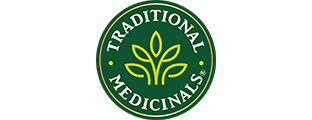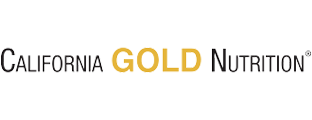Cycle Syncing: How To Achieve Hormonal Balance

Cycle syncing is the habit of tailoring your diet, exercise, and wellness habits to better support your mental, physical, and emotional health during each stage of the menstrual cycle. Cycle syncing not only helps you feel better throughout the month, but it also enables you to become more in tune with your menstrual cycle and aware of your body’s needs as your hormone levels naturally fluctuate.
What Is Cycle Syncing?
Cycle syncing involves adjusting your diet, exercise, and lifestyle habits to coordinate with each phase of your menstrual cycle. It aims to support the body with what it needs during each unique phase, improving energy levels, mood, and sleep, and reducing symptoms of premenstrual syndrome (PMS).
Hormone levels fluctuate throughout the menstrual cycle, increasing or decreasing during different stages of the cycle. The rise and fall of these hormones can impact everything from appetite and digestion to mood, sleep, emotions, cognitive function, and more. Understanding the different stages of the cycle, how they affect your body, and what your body needs to function at its best during each phase can improve your mental and emotional outlook and overall health.
What Is A Menstrual Cycle?
A menstrual cycle is the period of time between the first day of a woman’s period and the day before the next period begins. This typically lasts between 21 to 35 days, with an average of 28 days. A period, also known as menstrual bleeding or menses, starts on the first day of a menstrual cycle and typically lasts between three to seven days.
A period is not the only eventful phase of a menstrual cycle. There are actually two main phases in the cycle, the follicular and the luteal phase. These main phases are commonly subdivided into four stages:
- Menses: This phase begins on day one of your period when you start to menstruate and ends when your period is over.
- Follicular phase: This phase begins on day one of your period and ends when you ovulate (when your ovaries release an egg). The follicular phase overlaps with menstruation.
- Ovulation: Ovulation occurs around day 14 of the cycle when your ovaries release an egg.
- Luteal phase: This phase begins after ovulation and ends the day before your next period starts.
Menstruation
Menstruation, also known as a period, is the first phase of the menstrual cycle. When no pregnancy has occurred, the lining of the uterus sheds, resulting in bleeding from the vagina known as menstruation.
The amount of blood lost through menstruation varies, often starting with heavier bleeding on days two to three that tapers off during the final days of menstruation. Signs of heavy or irregular bleeding include passing blood clots larger than a quarter, bleeding through a pad or tampon every one to two hours for several hours in a row, bleeding longer than seven days, or needing to change a pad or tampon in the middle of the night.
Period symptoms can start as early as one to two weeks before the start of menstruation due to fluctuating hormones. During this period, estrogen, progesterone, follicle-stimulating hormone (FSH), and luteinizing hormone (LH) decline. Levels of serotonin, a hormone that helps regulate mood and emotions, also decline in the two weeks leading up to a period.
Period symptoms that begin one to two weeks before a period are collectively known as premenstrual syndrome or PMS. These symptoms include:
- Anxiety
- Depression
- Crying spells
- Mood swings, irritability, or anger
- Sleep disturbances or insomnia
- Appetite changes
- Social withdrawal
- Poor concentration
- Brain fog
- Headaches
- Migraines
- Abdominal bloating
- Water retention
- Abdominal cramping
- Back pain
- Muscle or joint pain
- Breast tenderness
- Acne
- Constipation
- Diarrhea
- Fatigue
- Libido changes
Not all women experience PMS, and symptoms vary greatly from person to person, as they are dependent on hormone fluctuations, lifestyle factors, and overall genetic predisposition.
Natural ways to support the body during PMS and menstruation include rest, self-care, a balanced diet, eating iron-rich foods, staying hydrated, and the following herbal remedies:
- Chasteberry (Vitex agnus-castus): Chasteberry may help balance hormones like estrogen and progesterone by decreasing levels of the hormone prolactin.1 It may also help alleviate bloating, cramps, breast tenderness, and menstrual cycle irregularities.
- Lemon balm (Melissa officinalis): A member of the mint family, lemon balm is known for its calming effect, which may help lower symptoms of anxiety, stress, or insomnia.2
- Evening primrose (Oenothera biennis): Evening primrose rose oil may help with mood swings, breast tenderness, and menstrual cramps.3
- Black cohosh (Cimicifuga racemosa): Black cohosh is an herb that may help alleviate symptoms associated with PMS, such as irritability, insomnia, and body aches.4
- Magnesium: Magnesium is a natural muscle relaxant that may help with insomnia or cramps. Try consuming magnesium before bedtime for a more restful night's sleep. Dark chocolate and cacao powder are great sources of magnesium! Additional food sources of magnesium include almonds, pumpkin seeds, avocado, bananas, and legumes.
- Vitamin B6 (pyridoxine): Vitamin B6 may support energy levels and provide some PMS relief related to mood and depression. Vitamin B6 is available as an individual supplement or as part of a multivitamin. Try eating more vitamin B6-rich foods during your luteal phase, including tuna, salmon, chickpeas, bananas, and spinach.
- Raspberry leaf: Typically consumed as a tea, raspberry leaf may help tone and strengthen the uterus, reducing heavy bleeding and cramps.
Follicular Phase
The follicular phase, also known as the reovulatory or proliferative phase, is the second stage of the menstrual cycle. The follicular phase begins on the first day of your period and ends at ovulation, around day 14, when the ovaries release an egg. During this phase, estrogen increases and progesterone levels remain low while the uterine lining thickens. Simultaneously, follicles in the ovaries mature in preparation for ovulation.
Ovulation
Ovulation, the third phase of the menstrual cycle, occurs when a mature egg is released from the ovary and travels down the fallopian tube in preparation for fertilization. Ovulation occurs on day 14 of the average 28-day menstrual cycle. However, the exact timing of ovulation can fluctuate based on an individual’s cycle length and other lifestyle factors.
Once released, an egg has a short lifespan of only 12 to 24 hours. If it isn’t fertilized within that window of time, the body reabsorbs it. This starts a cascade of signals within the body, including hormonal changes that prepare the body for menstruation.
If a sperm fertilizes the egg and conception occurs, pregnancy begins. The egg then travels to the uterus and attaches to the uterine lining, a process known as implantation. Implantation begins a chain of hormonal communication throughout the body that prevents menstruation.
Luteal Phase
The luteal phase, the fourth stage in the menstrual cycle, starts after ovulation around day 14 and continues until the start of the next period. During the luteal phase, the uterine wall continues to thicken in preparation for pregnancy.
The ovarian follicle that released the egg during this cycle changes into the corpus luteum, a temporary collection of cells. One role of the corpus luteum is to release progesterone in preparation for pregnancy. Progesterone is at its highest levels during the luteal phase. Estrogen levels are also elevated. If no pregnancy occurs, the corpus luteum dissolves, hormone levels drop, and menstruation begins.
Benefits Of Cycle Syncing
Cycle syncing can help you become more self-aware of your own health needs in relation to fluctuating hormone levels throughout the month, including caring for your mental, emotional, and physical health. Its potential benefits include:
- Improved mood
- Improved emotional wellness
- Better energy levels
- Improved sleep
- Less intense PMS symptoms
- Better dietary habits
- Improved fertility awareness
- Increased awareness of the upcoming period days
- Improved life and activity planning
- Better health monitoring
- Tailored supplementation based on menstrual-phase needs
- Overall improved health awareness
Who Could Benefit from Cycle Syncing?
Women with the following conditions or situations can all benefit from cycle syncing:
- Polycystic ovarian syndrome (PCOS)
- Premenstrual dysphoric disorder (PMDD)
- Premenstrual syndrome (PMS)
- Endometriosis
- Women using natural family planning (NFP)
- Any woman who wants to be more connected with her health and natural body rhythms
Many forms of birth control suppress or alter hormone levels. While you can cycle sync while on birth control, people using hormonal forms of birth control may find cycle syncing more challenging or less effective.
How To Start Cycle Syncing
Beginning cycle syncing is easy. Start by using a calendar or app to track your menstrual cycle. If using a calendar method, keep track of when you start and end your period, then calculate the estimated windows of each phase of your cycle. This will help you determine when your next period — and, thus, your next menstrual cycle — will begin. Period tracking apps are helpful for tracking your cycle and estimating the timing of future periods based on your personal trends and rhythms.
As you identify patterns in your cycle, you can adjust how you care for your body and overall health. This may include tailoring supplements to your cycle stage or planning more rest and self-care time in the week before and during your menstrual flow.
Cycle-Syncing Workouts
Your energy levels fluctuate throughout your menstrual cycle. So, certain types of exercise may be more or less beneficial and enjoyable based on where you are in your cycle. Try syncing your workout type to your cycle phase by following these exercise suggestions:
- Menses: Low-intensity exercise, like walking, yoga, or gardening, is ideal for this phase, when energy levels tend to be lower.
- Follicular: Endurance exercises such as running, swimming, cycling, and rowing work well during this phase of your cycle, when energy levels begin to rise again.
- Ovulation: Ovulation is typically when energy levels peak. This is the perfect time to try a new fun fitness class, dance, or engage in high-intensity exercises like interval training or running.
- Luteal: During the luteal phase, you may notice a drop in your energy levels and the emergence of PMS symptoms like bloating and breast tenderness. The luteal phase is a great time to practice yoga, Pilates, weight training, hiking, or walking.
Always listen to your body when determining which type of exercise and duration is the best fit for you personally during each phase of your menstrual cycle.
Why Women Should Cycle-Sync
Cycle-syncing is an excellent way for every woman to learn more about her body’s natural rhythms and health needs throughout her menstrual cycle. By tailoring daily habits, physical activity, and supplements to fluctuating energy levels, mood, and hormonal changes during the menstrual cycle, women can optimize their well-being and support their health in both the short and long term.
References:
- Van Die MD, Burger H, Teede H, Bone K. Vitex agnus-castus Extracts for Female Reproductive Disorders: A Systematic Review of Clinical Trials. Planta Med. 2013;79(07):562-575.
- Mathews IM, Eastwood J, Lamport DJ, Cozannet R Le, Fanca-Berthon P, Williams CM. Clinical Efficacy and Tolerability of Lemon Balm (Melissa officinalis L.) in Psychological Well-Being: A Review. Nutrients. 2024;16(20):3545.
- Mahboubi M. Evening Primrose (Oenothera biennis) Oil in Management of Female Ailments. J Menopausal Med. 2019;25(2):74.
- Mohapatra S, Iqubal A, Ansari MJ, et al. Benefits of Black Cohosh (Cimicifuga racemosa) for Women Health: An Up-Close and In-Depth Review. Pharmaceuticals. 2022;15(3).
DISCLAIMER:This Wellness Hub does not intend to provide diagnosis...














































































 Table of Contents
Table of Contents


